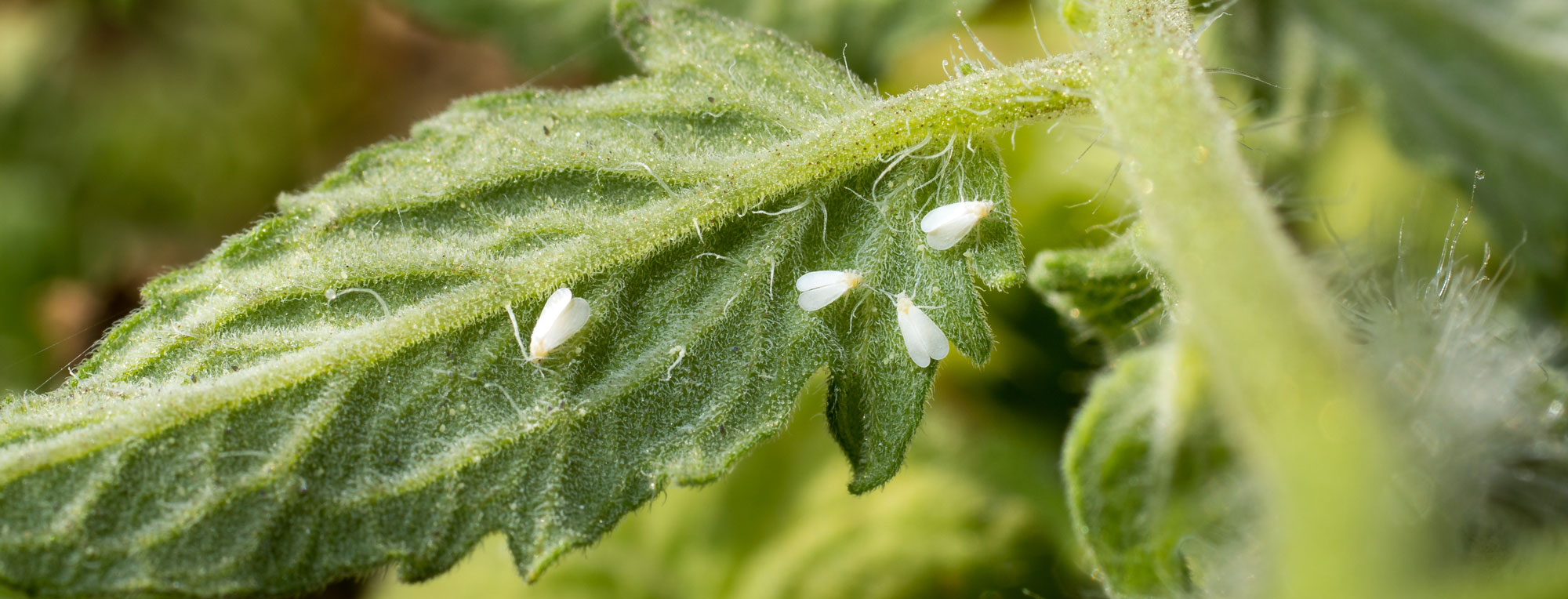
Whiteflies
About
Whiteflies are insects from the Aleyrodidae family. They are known to feed on the underside of leaves. Though there are more than 1,500 species of whiteflies, only a few species are known to be devastating to agriculture.
Biology
The three most common are Trialeurodes vaporariorum, also known as the greenhouse whitefly, Aleurodicus dugesii, also known as the giant whitefly, and Bemisia tabaci, also known as the sweetpotato whitefly.
Whiteflies typically lay their eggs on the underside of leaves and reproduce normally during times of warm weather. The larvae then hatch and feed on plant juices and leaves until they mature into adult flies.
Adult whiteflies are known to pass on diseases such as cucurbit leaf crumple virus, cucurbit yellow stunting disorder virus, squash vein yellowing virus, tomato yellow leaf curl virus, and tomato chlorosis virus.
Preferred Hosts
Whiteflies will feed on vegetable crops, fruit trees, and even ornamental crops.
What to Look Out For
Look out for any discoloration in fruit or leaves, as this is a sign the larvae are consuming them.
The larvae are small and may require hand lenses to see if they are on the leaves of your crop.
Due to the larvae releasing honeydew as a waste product, you may see some unsightly sooty mold that limits the plants’ ability to photosynthesize.
Economic Impact
Whiteflies will feast on a wide variety of crops. They suck the sap out of leaves, causing them to wilt and die. They also spread disease through their salivary glands. While small groups of whiteflies may not seem like a threat, once an infestation takes control, it can lead to mass crop fatalities.

| Kingdom: | Animalia |
| Phylum: | Arthropoda |
| Class: | Insecta |
| Order: | Hemiptera |
| Suborder: | Sternorrhyncha |
| Superfamily: | Aleyrodoidea |
| Family: | Aleyrodidae |
| Subfamilies[1] | |
|---|---|
| Synonyms | |
Aleurodidae | |



